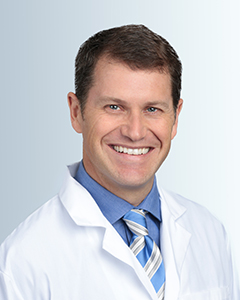What is Plagiocephaly?
What is plagiocephaly?
In the 1990s, the United States began the “Back to Sleep” program to reduce the risk of SIDS (Sudden Infant Death Syndrome). This program has been very effective at saving lives and has reduced the incidence of SIDS. Unfortunately, we have learned that placing children on their backs can lead to positional deformities of the skull. Estimates are that 22% of children in the United States will develop some degree of abnormal skull molding.
As a pediatrician, I have learned to look for abnormal head shape, medically referred to as plagiocephaly. I frequently find children who have developed an asymmetrical flat area in the back of their head. This variation of plagiocephaly seems to be the most common. These flat areas result from simply laying a child on firm flat surfaces too often.
Often, cases of plagiocephaly are caused by a pulled or injured neck muscle. This muscular injury could occur in the womb, at delivery or anytime the child’s head is not well supported.
When an adult pulls a neck muscle they consciously attempt to stretch it out. When babies pull a neck muscle they choose to look the way that it does not hurt. As they keep their head turned they begin to develop an off-center flat spot on the back of their head. If not corrected this will worsen and begin to affect other areas of the skull. Given time, the muscular injury will get better but the abnormal head shape could last.
Therapy is centered around stretching out the pulled neck muscle to allow the head to rest in a more normal position. Breastfed infants are often forced to turn their heads both ways by feeding on both breasts. However, formula fed infants whose parent feed the same way are often not forced to turn their heads both ways.
Addressing the issue at home
1.) Reverse how you feed your child. This is especially important for bottle fed children whose parents feed the same way. Simply by switching hands, you can begin to correct the problem.
2.) In most cases I recommend gentle stretches with every diaper change. The two preferred stretches are turning the head from side to side in a “no” pattern and from ear to shoulder. These stretches should not be forced. Stretches should be done when child is relaxed and happy.
3.) Minimize your child’s time in car seats, swings and other “containers.” When they are in their car seat, place your child’s car seat toys toward the side that you want him to look.
4.) When you place your child in his crib, orient him so that he is encouraged to stretch his neck. This orientation forces them to self-stretch if they want to see desired objects. Place them in the crib such that when he wants to turn and look at the middle of the room he will be stretching the damaged muscle.
5.) One of my boys had mild plagiocephaly due to a strained neck muscle. We saw the most improvement gently “bouncing” him around the house with his neck being stretched. When I held him I would gently turn his head while “bouncing” him for comfort.
When more intervention is needed
If home stretching fails, some children will need physical therapy.
After the neck musculature improves you usually see improvement in the child’s head shape. In some cases, the plagiocephaly does not improve on its own. A referral to a pediatric neurosurgeon should be made by 6 months of age if significant plagiocephaly continues. After an evaluation to rule out other abnormalities, the neurosurgeon may recommend the child wear a corrective helmet.
These helmets must be custom designed to “round out” a child’s head shape. Corrective helmets typically cost $2,000 to $3,000 and are typically not covered by insurance.
Often parents must weigh the cost of a helmet verses the likelihood of cosmetic deformity.







